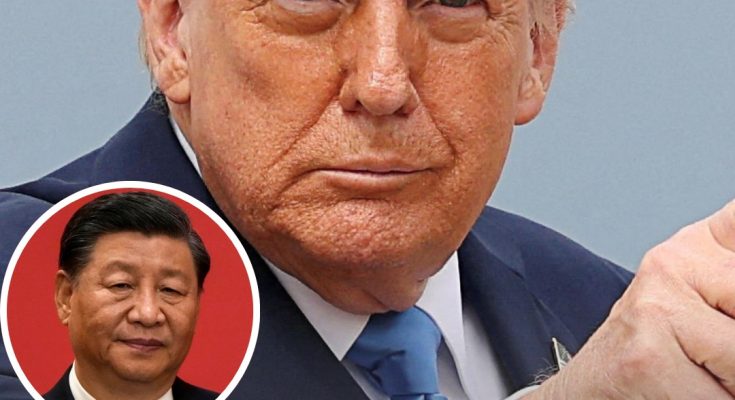
In early April, President Trump declared April 2 “Liberation Day,” marking the start of sweeping trade actions targeting America’s largest deficit partners.
China bore the brunt of the new policy as initial tariffs of 20% on Chinese goods quickly jumped to 34%, then 104%, and eventually surged to a staggering 145% – with some products facing taxes as high as 245%.
The White House insisted the tariffs were designed to “level the playing field” and protect U.S. national interests.
China retaliated swiftly, slapping a 125% tariff on American goods and banning its airlines from purchasing U.S. aerospace giant Boeing’s aircraft and parts, a move that has yet to receive a public response from Boeing.
Simultaneously, Chinese officials filed a complaint with the World Trade Organization, accusing the U.S. of escalating economic aggression.
Yet just weeks after ramping up his tariff war, the 78-year-old president now appears to be shifting course.

On May 9, Trump took to this Truth Social platform to share a post that highlighted a new figure.
“80 percent Tariff on China seems right! Up to Scott B,” – a nod to his Treasury Secretary, Scott Bessent. In a follow-up message, he added: “CHINA SHOULD OPEN UP ITS MARKET TO USA = WOULD BE SO GOOD FOR THEM!!! CLOSED MARKETS DON’T WORK ANYMORE!!!”
The unexpected walk-back raises questions about the administration’s next move, especially as top U.S. officials prepare to meet with a high-level Chinese delegation this weekend.
According to CNN, both Bessent and U.S. Trade Representative Jamieson Greer will attend the talks.
At a recent event honoring former SEC Chair Paul Atkins, Trump reassured attendees that his administration is still open to working with Beijing: “We’re doing fine with China. We’re going to live together very happily and ideally work together,” cited by The Guardian.
He further hinted that the final tariff rate would be reduced, noting: “It won’t be that high, not going to be that high.”
This apparent softening follows earlier rhetoric in which Trump accused China of exploiting the U.S. for decades. “NOBODY is getting ‘off the hook’ for the unfair Trade Balances… especially not China which, by far, treats us the worst!” he penned online.

Despite the shift in tone, some trade policies remain unchanged. The White House has paused tariff increases for most countries amid ongoing negotiations, but China remains the exception.
Meanwhile, President Xi Jinping is actively reshaping China’s trade narrative. During a diplomatic tour of Southeast Asia, Xi called on nations like Vietnam, Malaysia, and Cambodia to stand against “unilateral bullying” and help defend global trade norms, per BBC News. Analysts interpret this as a direct jab at the United States.
Former U.S. trade negotiator Stephen Olson described Xi’s strategy as “shrewd,” explaining: “While Trump seems determined to blow up the trade system, Xi is positioning China as the defender of rules-based trade, while painting the US as a reckless rogue nation.”
In a pointed response from the Oval Office, Trump scoffed at Xi’s efforts: “That’s a lovely meeting. Meeting like, trying to figure out, how do we screw the United States of America?”
Commerce Secretary Howard Lutnick also indicated more changes may be coming, teasing a potential “semiconductor tariff” and suggesting that exemptions for certain electronics, like smartphones and computers, could be short-lived.



